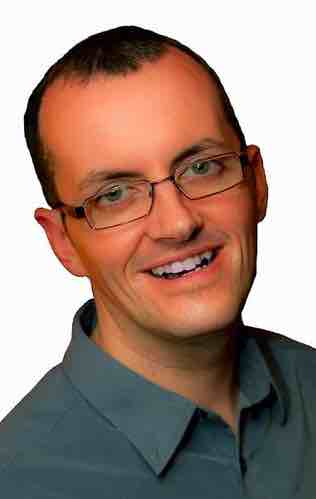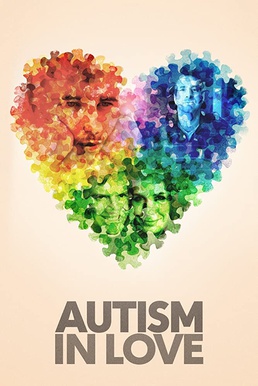
The autism rights movement, also known as the autistic acceptance movement, is a social movement allied with the disability rights movement. It emphasizes the neurodiversity paradigm, viewing autism as a set of naturally occurring variations in human cognition, a disability with both strengths and weaknesses, rather than as a disease to be cured or a medical disorder. This paradigm contradicts and diverges from the medical model of disability, without opposing all aspects of it.

Autism Is a World is an American short subject documentary film by Academy Award Producer and Director Gerardine Wurzburg and allegedly written by Sue Rubin, an autistic woman who is said to have learned to communicate via the discredited technique of facilitated communication. It was nominated in the 77th annual Academy Awards for Best Documentary Short Subject.
Son-Rise is a home-based program for children and adults with autism spectrum disorders and other developmental disabilities, which was developed by Barry Neil Kaufman and Samahria Lyte Kaufman for their son Raun, who was diagnosed with autism and is claimed to have fully recovered from his condition. The program is described by Autism Speaks as a "child-centered program that places parents as the key therapists and directors of their program."

Autism: The Musical is an independent documentary film directed by Tricia Regan. In April 2007, the film premiered at the Tribeca Film Festival in New York City. The film recounts six months of the lives of five children who are on the autism spectrum in Los Angeles, California as they write and rehearse for an original stage production.
Autistic art is artwork created by autistic artists that captures or conveys a variety of autistic experiences. According to a 2021 article in Cognitive Processing, autistic artists with improved linguistic and communication skills often show a greater degree of originality and attention to detail than their neurotypical counterparts, with a positive correlation between artistic talent and high linguistic functioning. Autistic art is often considered outsider art. Art by autistic artists has long been shown in separate venues from artists without disabilities. The works of some autistic artists have featured in art publications and documentaries and been exhibited in mainstream galleries. Although autistic artists seldom received formal art education in the past, recent inclusivity initiatives have made it easier for autistic artists to get a formal college education. The Aspergers/Autism Network's AANE Artist Collaborative is an example of an art organization for autistic adults.

Societal and cultural aspects of autism or sociology of autism come into play with recognition of autism, approaches to its support services and therapies, and how autism affects the definition of personhood. The autistic community is divided primarily into two camps; the autism rights movement and the pathology paradigm. The pathology paradigm advocates for supporting research into therapies, treatments, and/or a cure to help minimize or remove autistic traits, seeing treatment as vital to help individuals with autism, while the neurodiversity movement believes autism should be seen as a different way of being and advocates against a cure and interventions that focus on normalization, seeing it as trying to exterminate autistic people and their individuality. Both are controversial in autism communities and advocacy which has led to significant infighting between these two camps. While the dominant paradigm is the pathology paradigm and is followed largely by autism research and scientific communities, the neurodiversity movement is highly popular among most autistic people, within autism advocacy, autism rights organizations, and related neurodiversity approaches have been rapidly growing and applied in the autism research field in the last few years.
The Autistic Self Advocacy Network (ASAN) is an American 501(c)(3) nonprofit advocacy organization run by and for individuals on the autism spectrum. ASAN advocates for the inclusion of autistic people in decisions that affect them, including: legislation, depiction in the media, and disability services.
Autism spectrum disorder (ASD), or simply autism, is a neurodevelopmental disorder "characterized by persistent deficits in social communication and social interaction across multiple contexts" and "restricted, repetitive patterns of behavior, interests, or activities". Sensory abnormalities are also included in the diagnostic manuals. Common associated traits such as motor coordination impairment are typical of the condition but not required for diagnosis. A formal diagnosis requires that symptoms cause significant impairment in multiple functional domains, in addition to being atypical or excessive for the person's age and sociocultural context.

Alexander Plank is an American autism advocate, filmmaker and actor. He is known for founding the online community Wrong Planet, working on FX's television series The Bridge, and acting on The Good Doctor. At the age of 9, Plank was diagnosed with Asperger syndrome. Plank started Wrong Planet at the age of 17 in order to find others like him on the Internet. After the popularity of Wrong Planet grew, Plank began to be frequently mentioned in the mainstream media in articles relating to autism, Asperger's, and autism rights.
Too Sane for This World is a documentary series that was directed by William Davenport. The first film, Too Sane for This World, was released on September 1, 2011, and features an introduction by Dr. Temple Grandin. The second documentary, Citizen Autistic, was released on April 1, 2013.
Autism spectrum disorders (ASDs) or autism spectrum conditions (ASCs) describe a range of conditions classified as neurodevelopmental disorders in the DSM-5, used by the American Psychiatric Association. As with many neurodivergent people and conditions, the popular image of autistic people and autism itself is often based on inaccurate media representations. Additionally, media about autism may promote pseudoscience such as vaccine denial or facilitated communication.

Kevin Healey is an autism activist. He also campaigns against bullying.

How to Dance in Ohio is a 2015 American documentary film directed by Alexandra Shiva. The film follows a group of autistic young adults in Columbus, Ohio preparing for their first spring formal. With guidance from their group counselor, Dr. Emilio Amigo, the group spends 12 weeks practicing their social skills in preparation for the dance. HBO Documentary Films acquired television rights to the film eleven days before its world premiere at the 2015 Sundance Film Festival. The film premiered on HBO on October 26, 2015. Three young women are the main subjects of the documentary.
Sex and gender differences in autism exist regarding prevalence, presentation, and diagnosis.

Loving Lampposts is a 2010 documentary film directed by Todd Drezner, exploring the neurodiversity movement and the principle of autism acceptance through a series of interviews and candid footage. Drezner is the father of an autistic child whose attachment to and fascination with lampposts gave the film its title.

Citizen Autistic is a 2013 documentary film directed by William Davenport exploring the advocacy work of autism rights activists. Citizen Autistic features interviews with autistic activists including Ari Ne'eman, co-founder and former president of the Autistic Self Advocacy Network, and Zoe Gross, creator of the Disability Day of Mourning annual vigils held in honor of filicide victims with disabilities. The documentary covers topics important to neurodiversity such as the debate over whether researchers should seek a cure for autism and controversies surrounding the nonprofit organization Autism Speaks and the Judge Rotenberg Center, a residential institution known for using electric skin shock aversive treatment as a form of behavioral modification.
Morénike Giwa Onaiwu is an American educator, author, and autism and HIV advocate. Alongside E. Ashkenazy and Lydia Brown, Onaiwu is an editor of All the Weight of Our Dreams, an anthology of art and writing entirely by autistic people of color published by the Autism Women's Network in June 2017.

Autism in Love is an American documentary film released in 2015.

Current research indicates that autistic people have higher rates of LGBTQ identities and feelings than the general population. A variety of explanations for this have been proposed, such as prenatal hormonal exposure, which has been linked with sexual orientation, gender dysphoria and autism. Alternatively, autistic people may be less reliant on social norms and thus are more open about their orientation or gender identity. A narrative review published in 2016 stated that while various hypotheses have been proposed for an association between autism and gender dysphoria, they lack strong evidence.











